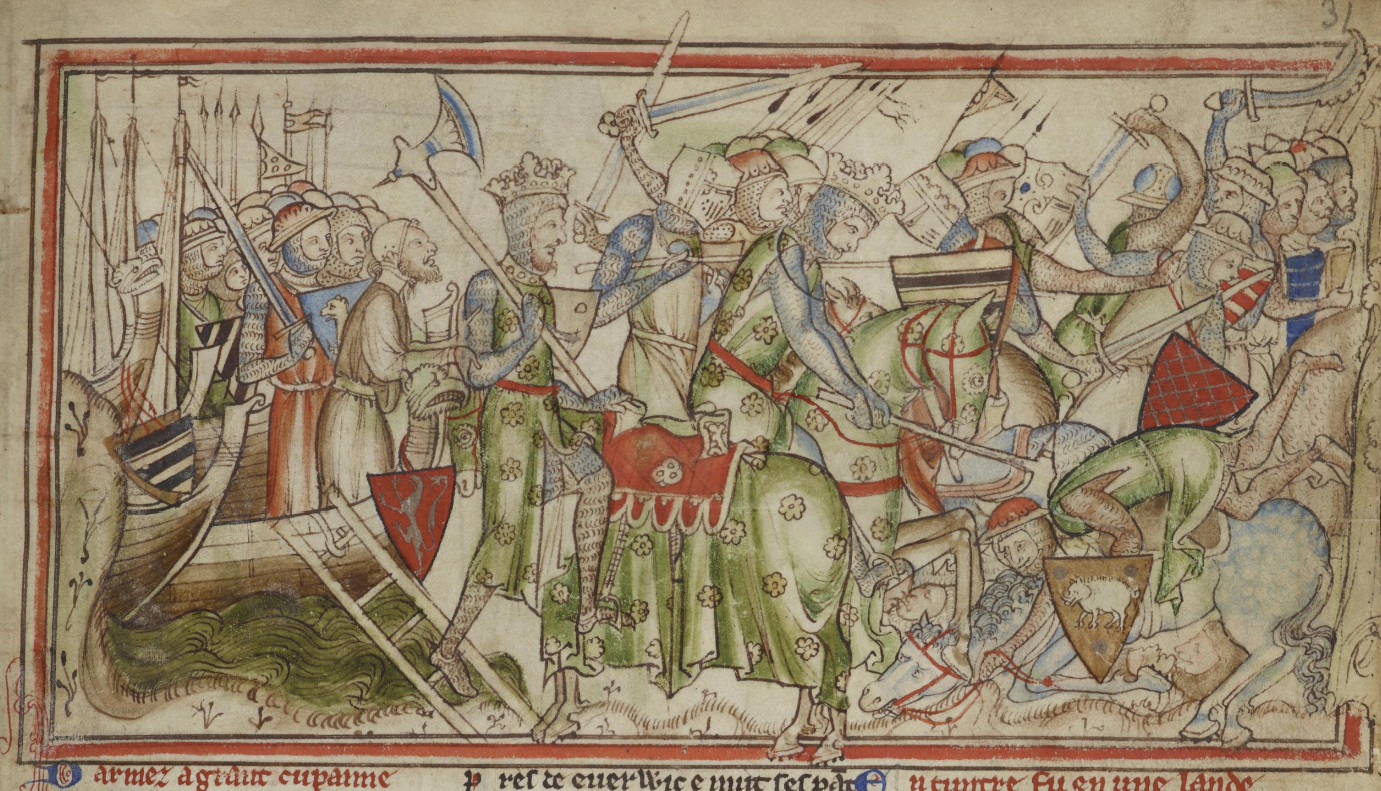Battle of Fulford
Background
England, 1066. Edward the Confessor died without an heir, and the crown was contested by several rivals, including King Harald III of Norway (Harald Hardrada), William, Duke of Normandy, and Harold Godwinson, who had himself crowned King of England on January 6th, 1066, the day after Edward's death.
Tostig Godwinson, Harold's estranged younger brother, had been the Earl of Northumbria, but due to the harsh way he ruled, he was forced out by other northern earls and exiled in 1065 by Edward the Confessor.
Tostig aligned himself with the King of Norway, Harald Hardrada, and encouraged Harald to claim the English crown. Together, they amassed an army and set sail across the sea. They sacked and burned Scarborough before landing in Yorkshire at the mouth of the River Humber and then sailed up the River Ouse, moving north towards York and beginning their invasion of England.
Battle
On September 20th, 1066, Harald and Tostig were confronted by Harold Godwinson's earls, Edwin, and Morcar, a few miles south of York, along the River Ouse near the village of Fulford.

Edwin and Morcar positioned their combined Anglo-Saxon forces near a marshy area in an attempt to block the road to York. Hardrada's army is said to have been 6,000 to 10,000 men strong compared to the earls' forces of between 5,000 to 6,000 men. They blocked the road but gave Hardrada the high ground.
The battle began as the two shield walls of men clashed, with neither side gaining an advantage. The Anglo-Saxons pushed first before Harald's men could fully deploy for battle, but this push didn't last as Harald's more experienced troops came to bear upon the English.
Soon, Harald was able to outflank the Anglo-Saxon forces from the right flank, and the marshy ground began to restrict the army's movement, leading to confusion and disarray. The Norwegians pushed harder against the flank, which soon crumbled under pressure. Edwin's forces on the left flank retreated towards York, leaving Morcar's already weakening force to fight without support.

The English forces were soon overwhelmed and routed, with many English being killed while fleeing by drowning in the River Ouse or caught in the marsh and cut down by pursuing Norwegians. Both Earl Edwin, and Earl Morcar escaped, but the city of York was now left unprotected.
Aftermath
The Battle of Fulford was a significant win for Harald Hardrada as it opened the gateway to York and passage to the north of England. After the battle, York surrendered and negotiated that 150 hostages would join the Viking army and food would be given freely to avoid being sacked. York was also part of Tostig Godwinson's lands before he was exiled, so that also likely saved the city from being sacked.
Hardrada was now in a good position to press his claim to the throne. Hardrada moved his army seven miles east of York, to the town of Stamford Bridge, and built a camp to await the 150 hostages from York and to rest. But his victory would be short-lived.
Tostig's brother, Harold Godwinson, King Harold II of England, was already preparing to march his army north and would confront the Viking army just five days later at the Battle of Stamford Bridge.


 Earl Edwin
Earl Edwin